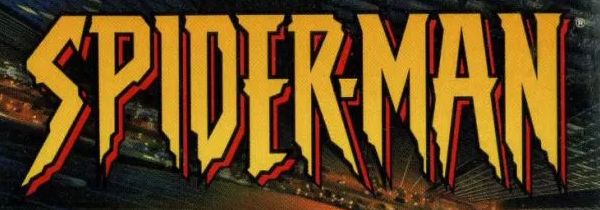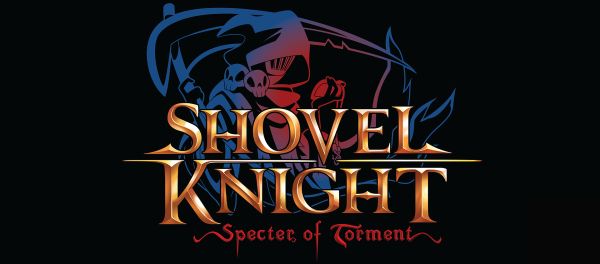Most Recent: Top Story
Splatoon 2 Global Testfire Impressions: This Pre-Release Test Proved Nintendo’s Shooter Franchise is Still “Fresh”

Even though it shipped to stores in a half-finished state, the near-instantaneous success of Splatoon guaranteed that a sequel would make an appearance sooner rather than later. But with Splatoon’s rise coinciding with the Wii U’s collapse, that sequel is now bound for a Summer 2017 launch on the Nintendo Switch. And the whole world got to test it out this weekend as part of the Splatoon 2 Global Testfire.
Does the franchise still feel “fresh” two years later? Oh yeah… (more…)
Disorganization Leads to Criticism At Halo World Championship 2017 Finals

Fans and competitors alike were dismayed by the organizational failures at the Halo World Championship 2017 Finals this weekend. While esports events are still a fairly new phenomenon, they are an important subsect of the gaming community, and are gradually being recognized as such. That’s what made the current state of the Championship so dissatisfying for some of those in attendance.
Much of the issue lies with the subpar venue. In comparison to last year’s location at Raleigh Studios Hollywood, this year’s venue, the ESL American Campus, was a massive step down in the eyes of some. Just take a look at last year’s Halo World Championship tournament in contrast to this year’s event: (more…)
The Video Game Canon: The Secret of Monkey Island

Dig deeper into the Video Game Canon with a look at The Secret of Monkey Island and the many inspirations developers plundered from to make it. Here’s a teaser…
Game publishers have been concerned with digital pirates illegally copying their games since the very beginning of the medium. Some have even gone so far as to include booby traps in their code for these would-be thieves. But when it comes to depicting actual pirates, gamemakers (along with major Hollywood players and one of the most celebrated fantasy authors of the last few decades) are content to pillage, plunder, and steal all the best ideas from each other.
It all began in 1967 when Walt Disney himself oversaw the construction of the Pirates of the Caribbean attraction at Disneyland. Over the years, the ride would go on to be recreated at Disney World, Tokyo Disneyland, and Disneyland Park in Paris. Borrowing a bit from Treasure Island, the ride’s exciting ship-to-ship battle, raid on a coastal outpost, group of prisoners trying to bribe a dog for a key, and the frothy ditty “Yo Ho (A Pirate’s Life For Me)” created the quintessential image of a pirate that was shared by kids the world over.
Tim Powers was not one of these kids. Already a teenager by the late 60s, Powers rose to prominence as one of the earliest authors of steampunk (and he, along with K.W. Jeter and James Blaylock, helped coin the phrase). In 1987, he published one of his most famous novels, On Stranger Tides. The novel tells the tale of John Chandagnac, an inexperienced youth who becomes the debonair pirate “Jack Shandy” and rescues the girl after he has a run-in with several undead buccaneers.
A few years later, Lucasfilms Games’s Ron Gilbert took his experiences with the ride and mixed them with the magical seascapes of On Stranger Tides to create The Secret of Monkey Island, a point-and-click adventure game first published in 1990. The Secret of Monkey Island starred Guybrush Threepwood, an inexperienced youth with floppy hair who battled his own pirate nemesis, the undead LeChuck, in an attempt to rescue the girl. Most people would chalk these coincidences up to happenstance or cliche, but not Ron Gilbert. He’s the first to tell to you that what he did was out-and-out piracy. Or, in his words, “We in the business call it ‘stealing’.”
Visit VideoGameCanon.com to continue reading this article and to explore the complete Top 1000.
Kickstart This! Pine

Those of you who were hoping for a game based around the life of Star Trek captain and Wonder Woman love interest Chris Pine are going to be sorely disappointed, and then pleasantly surprised, with Pine. This Kickstarter campaign launched just as The Legend of Zelda: Breath of the Wild and Horizons: Zero Dawn landed on shelves, reinvigorating the open world adventure genre, and leaving gamers ready to embark on another big quest. Pine limits its open world by setting it on an island, a smart design choice for an indie open world game, but more intriguingly, it asks the question, “What if man never made it to the top of the food chain?”
Let’s find out! (more…)
It Came From 200X: Spider-Man

The tail-end of the 90s wasn’t a great time for superhero games. With the likes of Superman 64, Batman Beyond: Return of the Joker, and Spawn: The Eternal clogging store shelves, the average comic geek had few options for playable superheroics. That is, until Neversoft and Activision took it upon themselves to create one of the best comic book-based games of all time: Spider-Man!
Okay, so the title is lazy — but it also set the expectation that gamers could finally become Spider-Man like no previous video game could achieve. Launching in 2000 for the Sony PlayStation (with ports appearing over the next 12 months on the Nintendo 64, Dreamcast, and PC), this game oozed authenticity from minute one. From the very beginning, we were living an adventure narrated by Stan Lee, hanging out with the acrobatic Black Cat, swinging by the famous Baxter Building (home of the Fantastic Four), and putting an end to a daring bank robbery.
It was, quite frankly, a revelation. Suddenly, superhero games didn’t have to be cheap cash-ins like all of those terrible movie-based atrocities. There were a few pioneers on earlier consoles, to be sure — Batman on NES and Spider-Man and Venom: Maximum Carnage for SNES/Sega Genesis come to mind — but this gem captured my imagination like no other. However, does it hold up to those sugary-sweet memories in these darker modern times? (more…)
The Video Game Canon: Tomb Raider (1996)

Dig deeper into the Video Game Canon by checking in with Tomb Raider (1996), the debut adventure of one of gaming’s most famous female characters. Here’s a teaser…
For better or worse, Lara Croft is the most famous woman in all of gaming. But all her fame might be a fluke, because the developers behind her creation claim it was all an accident.
Formed in the late 80s, Core Design was an unlikely candidate to be creating a wide open 3D title like Tomb Raider. The developer’s biggest claim to fame at the time was Rick Dangerous, a game that could charitably be called an “homage” to Indiana Jones. Other gamers might remember Chuck Rock, a platformer created by Core that starred a dimwitted caveman. But like many British developers of the time, they didn’t think about their limitations and just went for it. This definitely applied to Toby Gard, the artist behind Lara Croft’s original look.
Like Rick Dangerous, Lara began life as a man with no name that bore a striking resemblance to Harrison Ford. Fearing a lawsuit, Gard redrew the character as a woman and began tinkering with a number of different personalities. The artist told IGN in 2008 that the proto-Tomb Raider began life as a “sociopathic blonde” before morphing into a muscle woman, a “flat topped hip hopster,” and a “Nazi-like militant in a baseball cap.” None of these looks fit the game that Core envisioned, but Gard’s final pass at it proved to be the winner. Laura Cruz, “a tough South American woman in a long braid and hot pants,” was born.
We’ll never know if Laura Cruz would have received the same reception, but Gard continued to tinker, and eventually, the character became a descendant of British royalty when the developers plucked the name Lara Croft out of a City of Derby phone book. The final piece of the puzzle fell into place when Gard was playing with a slider that controlled the size of Lara’s breasts and accidentally inflated them to 150% their original size. The Core Design team gathered around Gard’s computer and hooted their approval, even if the artist himself was skeptical of the character’s inflated curves.
Visit VideoGameCanon.com to continue reading this article and to explore the complete Top 1000.
Shovel Knight: Specter of Torment Review: Death Takes Over in a Perfect Prequel

Yacht Club Games has built a strong reputation over the years for their ability to deconstruct, modernize, and regenerate the side-scrolling platformer. Using Ducktales and Mega Man as a template, the original Shovel Knight was a game that honored the past, while only being able to exist in the present. Meanwhile, its first expansion, Plague of Shadows, brought back the gadget platformer in a unique adventure that felt more like a true sequel than an add-on.
The developer must have had the same thought, as Shovel Knight: Specter of Torment is the first game in the franchise’s rapidly-growing expanded universe to be available as a standalone game as well as a free expansion. Widening their playing field has also lead Yacht Club to tackle the cinematic storytelling and swordplay found in the NES era’s ninja platformers, best exemplified by Ninja Gaiden. (more…)
The Video Game Canon: Ms. Pac-Man

Dig deeper into the Video Game Canon with a look at the accidental creation of Ms. Pac-Man. Here’s a teaser…
It’s easy to forget nowadays, but Ms. Pac-Man was actually created by accident. Like Doc Brown’s invention of time travel after a tumble from the toilet, Ms. Pac-Man was created when a group of game developers from MIT attempted to release an unauthorized sequel to Pac-Man known as “Crazy Otto.”
Before turning their sights on the biggest arcade game of the day, the development team, General Computer, first used their programming skills to create an “enhancement kit” for Atari’s Missile Command. Instead of creating their own game from scratch, the enhancement kit hooked into Atari’s code and altered it to provide a new gameplay experience. Essentially, General Computer created the first expansion pack.
Even though the enhancement kit required an original Missile Command cabinet, Atari later attempted to sue General Computer for copyright infringement. But rather than become mired in a protracted court case, the arcade giant and the enterprising college students reached a settlement. Atari would hire General Computer to design original arcade games so long as they agreed not to create any additional enhancement kits without the permission of the original game publisher. The developers quickly signed on, but first they took a nearly complete version of “Crazy Otto” to Midway, the North American distributor of Pac-Man.
Visit VideoGameCanon.com to continue reading this article and to explore the complete Top 1000.







